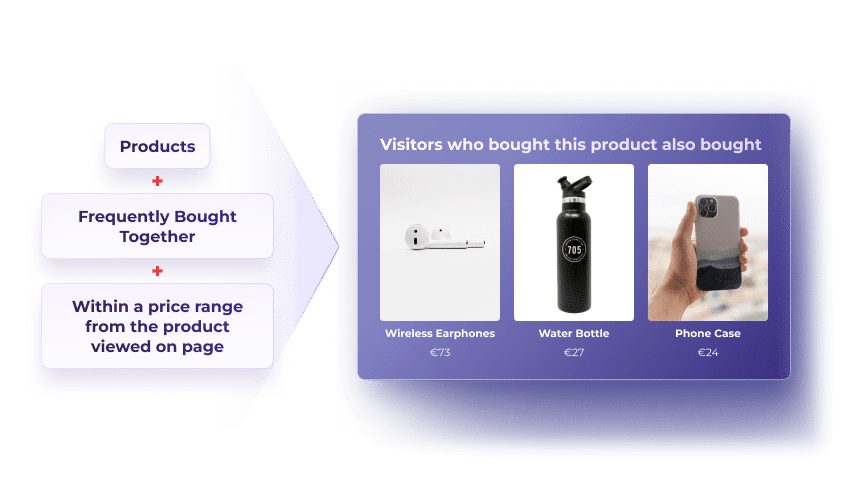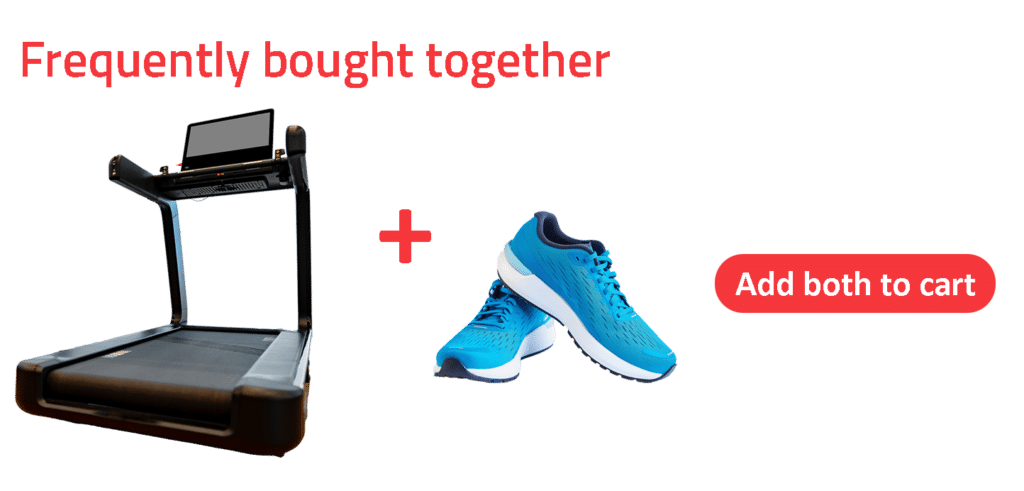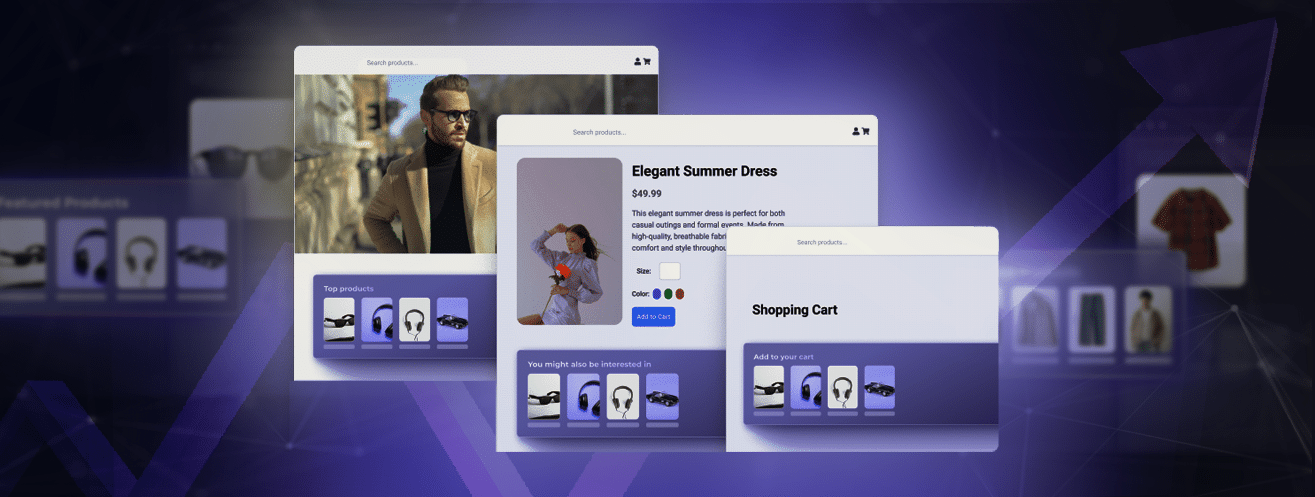E-commerce personalization isn’t just a feel-good strategy for your customers; it’s the key to business success. About 65% of e-commerce stores notice an increase in conversion rates after adopting a personalization strategy.
In this article, we’ll discuss five simple but effective e-commerce personalization strategies to boost conversions for your online store.
What is E-Commerce Personalization?
E-Commerce personalization means tailoring the entire online shopping experience to match individual customers’ preferences, behaviors, demographics, or other personal data.
For example, let’s say a customer frequently purchases shoes from your online store. E-commerce personalization would mean sending them product emails containing new shoe releases or only serving them shoe collection ads on your website.
The goal is to create a more relevant and engaging experience, which can lead to increased customer satisfaction, higher conversion rates, and improved customer loyalty.
What are the Benefits of E-Commerce Personalization?
Implementing personalization across your e-commerce marketing channels will:
1. Improve Customer Retention
More than 55% of participants in a Segment Personalization survey said they would likely become repeat buyers after a personalized shopping experience.
When customers buy repeatedly from your e-commerce store, you can grow revenue without spending time or money acquiring new customers, especially if you’re in an industry with high customer acquisition costs.
2. Improve Customer Loyalty
E-commerce personalization creates personalized experiences that resonate with individual preferences, making customers feel valued and understood. This enhances the overall customer journey, encouraging repeat business and long-term engagement with your e-commerce brand.
3. Lead to Higher Average Order Value (AOV)
Average Order Value (AOV) refers to the average amount of money each customer spends per transaction on your website. When customers spend more per transaction, overall revenue grows, even if the number of orders remains the same.
Personalization creates upselling and cross-selling opportunities, causing customers to spend more money on your website. Personalization tools can identify customers willing to spend more based on their shopping habits and present them with exclusive offers or discounts that match their spending potential, driving up the AOV.
Five Best Strategies for Ecommerce Search Personalization for Increased Conversions
Now that you know what e-commerce personalization is and how it impacts your business, let’s look at five ways to personalize your e-commerce website to increase conversions.
1. Make it Easy for Visitors to Find Products
The easier it is for customers to find relevant products on your e-commerce website, the quicker they shop. This often translates into more conversions and revenue for your business.
The best way to achieve this is to integrate a site search engine into your website. Think of it as Google for your e-commerce store. Instead of scrolling through tens or hundreds of product pages, customers can input product keywords into the internal search engine to find what they need quickly.
If you choose an advanced e-commerce search solution like AddSearch, your customers can apply filters to search results, find products without inputting their exact names, and complete searches using synonyms.
2. Provide Personalized Product Recommendations
An Accenture report found that nearly 60% of shoppers will make a purchase if they get personalized recommendations from the retailer.
Too many options can overwhelm customers, often leading them to abandon your website. To narrow down their choices, they’d rather get a recommendation on what to buy based on their past purchase behavior or preferences.
A content recommendation engine like AddSearch can help here. It automatically suggests products to customers based on predefined criteria, such as pricing, inventory freshness, and similarity.
For example, AddSearch can highlight items similar to what a customer is viewing on a page. It can also show items within specific price ranges if a customer’s website activity indicates that they’re looking for cheaper deals.

3. Localize Website and Product Content
About 40% of online shoppers in a CSA research said they would not buy from websites in a different language.
Localization allows shoppers to browse your e-commerce website in their language. For example, a customer from the U.S. will see and interact with your website in English, and one from the Netherlands will see product information in Dutch. This is particularly beneficial for international stores with a global customer base.
No-code localization tools like Localise and Weglot can automatically translate and serve your e-commerce website content in multiple languages. However, you can take things further by integrating a multilingual site search solution like AddSearch into your website.
AddSearch automatically detects and matches the search results with the web page’s language. That way, when people search for products, they will only see results in their own language — creating a better experience and increasing their chances of converting.
4. Categorize Products Based on Shopping Trends
E-commerce personalization is mostly reactive, meaning personalization happens in response to a user’s actions or inputs rather than proactively anticipating their needs or preferences.
While there’s nothing wrong with this approach, you don’t always have to wait for real-time actions to personalize a customer’s experience. You can predict what they want by analyzing shopping trends from past customers.
For example, let’s say you notice that customers who buy treadmills purchase running shoes too. In that case, you can recommend them as frequently bought-together items. When someone buys a treadmill, they’ll see running shoes as product suggestions and vice versa.

Product categorization not only boosts conversions but also increases upselling and cross-selling opportunities, leading to more revenue.
5. Use Retargeting Ads
Retail website visitors who are retargeted with display ads are 70% more likely to convert into customers. A retargeting ad is a type of online advertising that is served to users who have previously interacted with your website but did not complete a purchase or a desired action.
The aim is to re-engage past visitors by displaying relevant ads as they browse other parts of the Internet, encouraging them to return to your website and complete their purchase.
You can set up and manage retargeting campaigns using Google Ads, Facebook Ads Manager, and AdRoll. Each platform has its strengths and targeting capabilities, so select one that aligns with where your audience spends their time online.
Experience the Benefits of E-Commerce Personalization with AddSearch
AddSearch offers comprehensive site search and recommendation solutions that help you personalize customer experiences at scale for increased conversions. Our solution delivers a sophisticated search experience that makes it effortless for visitors to locate relevant content quickly.
Beyond just search functionality, our tool provides detailed analytics that reveal user behavior patterns and search trends. This invaluable data helps you make informed decisions to optimize content and enhance engagement on your e-commerce store.
Want to see things for yourself? Try AddSearch for free for 14 days.
E-Commerce Personalization FAQs
Find answers to common questions about implementing e-commerce personalization to drive conversions for your online store.
1. Does Personalization Increase E-Commerce Conversions?
Yes, personalization significantly boosts e-commerce conversions. Tailoring the online shopping experience to individual customers’ preferences creates more engaging experiences, leading to higher conversion rates and customer loyalty.
2. Can Small E-Commerce Businesses Afford Personalization?
Yes, many tools and platforms offer scalable personalization solutions suitable for small e-commerce businesses’ budgets and technical capabilities. Start with simple tactics like personalized email marketing or basic product recommendations. As the business grows, you can incorporate more sophisticated personalization tools and strategies, like a site search engine.
3. How Does AI Contribute to E-Commerce Personalization?
Artificial Intelligence (AI) analyzes vast amounts of data to identify patterns, predict customer behaviors, and automate personalized experiences at scale. AI optimizes product recommendations, personalizes search results, and delivers dynamic content in real time, significantly enhancing the shopping experience for each customer.









